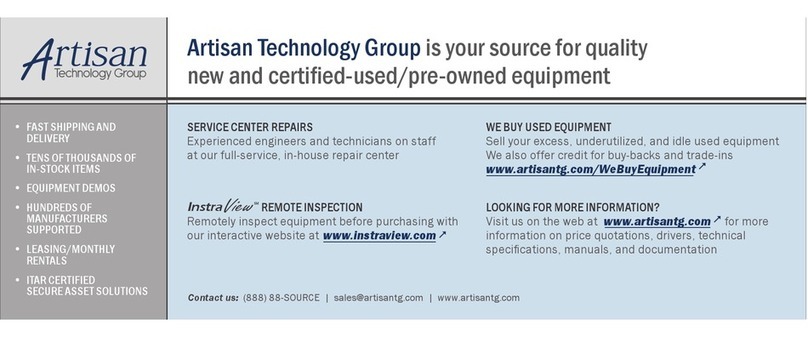
INTRODUCTION
Copyright 2001 1-2 DAC128V HARDWARE REFERENCE
• Systran Corporation: www.systran.com
1.3 Quality Assurance
Systran Corporate policy is to provide our customers with the highest quality products
and services. In addition to the physical product, the company provides documentation,
sales and marketing support, hardware and software technical support, and timely product
delivery. Our quality commitment begins with product concept, and continues after
receipt of the purchased product.
Systran’s Quality System conforms to the ISO 9001 international standard for quality
systems. ISO 9001 is the model for quality assurance in design, development, production,
installation and servicing. The ISO 9001 standard addresses all 20 clauses of the ISO
quality system, and is the most comprehensive of the conformance standards.
Our Quality System addresses the following basic objectives:
• Achieve, maintain and continually improve the quality of our products through
established design, test, and production procedures.
• Improve the quality of our operations to meet the needs of our customers,
suppliers, and other stakeholders.
• Provide our employees with the tools and overall work environment to fulfill,
maintain, and improve product and service quality.
• Ensure our customer and other stakeholders that only the highest quality product
or service will be delivered.
The British Standards Institution (BSI), the world’s largest and most respected
standardization authority, assessed Systran’s Quality System. BSI’s Quality Assurance
division certified we meet or exceed all applicable international standards, and issued
Certificate of Registration, number FM 31468, on May 16, 1995. The scope of Systran’s
registration is: “Design, manufacture and service of high technology hardware and
software computer communications products.” The registration is maintained under BSI
QA’s bi-annual quality audit program.
Customer feedback is integral to our quality and reliability program. We encourage
customers to contact us with questions, suggestions, or comments regarding any of our
products or services. We guarantee professional and quick responses to your questions,
comments, or problems.
1.4 Technical Support
Technical documentation is provided with all of our products. This documentation
describes the technology, its performance characteristics, and includes some typical
applications. It also includes comprehensive support information, designed to answer any
technical questions that might arise concerning the use of this product. We also publish
and distribute technical briefs and application notes that cover a wide assortment of
topics. Although we try to tailor the applications to real scenarios, not all possible
circumstances are covered.
Although we have attempted to make this document comprehensive, you may have
specific problems or issues this document does not satisfactorily cover. Our goal is to
offer a combination of products and services that provide complete, easy-to-use solutions
for your application.
Artisan Technology Group - Quality Instrumentation ... Guaranteed | (888) 88-SOURCE | www.artisantg.com





























